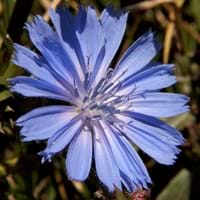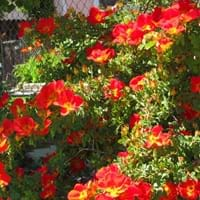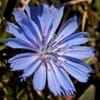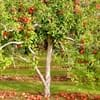Life Span
Perennial
Perennial
Type
Flowering Plants, Shrubs, Vegetable
Flowering Plants, Ornamental Plants, Shrubs
Origin
Mediterranean
Not Available
Types
Belgian Endive, Red Belgian Endive, Curly Endive (a.k.a. Frisee), Escarole, Radicchio (Chioggia) and Radicchio (Chioggia)
Not Available
Number of Varieties
Not Available
Habitat
Grassland, Mediterranean region, Wild
Foot Hills
USDA Hardiness Zone
3-9
Not Available
AHS Heat Zone
9-1
Not Available
Sunset Zone
A1, A2, A3, H1, H2, 1a, 1b, 2a, 2b, 3a, 3b, 4, 5, 6, 7, 8, 9, 10, 11, 12, 13, 14, 15, 16, 17, 18, 19, 20, 21, 22, 23, 24
Not Available
Habit
Clump-Forming
Clump-Forming
Flower Color
Blue
Orange Red, Yellow
Flower Color Modifier
Not Applicable
Bicolor
Fruit Color
Brown
Non Fruiting Plant
Leaf Color in Spring
Green
Green
Leaf Color in Summer
Green
Green, Dark Green
Leaf Color in Fall
Green
Dark Green
Leaf Color in Winter
Green
Dark Green
Leaf Shape
Oblong
Pinnate
Plant Season
Summer
Spring, Summer, Fall
Sunlight
Full Sun, Part sun
Full Sun, Partial Sun
Growth Rate
Medium
Medium
Type of Soil
Loamy, Sandy
Loam, Sand
The pH of Soil
Acidic, Alkaline, Neutral
Acidic, Neutral
Soil Drainage
Well drained
Well drained
Bloom Time
Summer
Spring, Late Spring, Early Summer, Summer, Late Summer, Early Fall, Fall
Repeat Bloomer
Yes
Not Available
Tolerances
Not Available
Drought
Where to Plant?
Ground
Container, Ground, Pot
How to Plant?
Seedlings
Cuttings
Plant Maintenance
Medium
Medium
Watering Requirements
Keep the ground moist but not water-logged, Prefer drip-irrigation instead of Over-head watering, Requires regular watering, Requires watering in the growing season
Average Water Needs
In Summer
Lots of watering
Lots of watering
In Spring
Moderate
Moderate
In Winter
Average Water
Average Water
Soil pH
Acidic, Alkaline, Neutral
Acidic, Neutral
Soil Type
Loamy, Sandy
Loam, Sand
Soil Drainage Capacity
Well drained
Well drained
Sun Exposure
Full Sun, Part sun
Full Sun, Partial Sun
Pruning
Cut or pinch the stems, Prune prior to new growth, Prune to stimulate growth, Remove dead or diseased plant parts, Remove deadheads
Remove damaged leaves, Remove dead branches, Remove dead leaves
Fertilizers
All-Purpose Liquid Fertilizer
All-Purpose Liquid Fertilizer
Pests and Diseases
Aphids, Loopers, Root rot, Viruses, Worms
Beetles, Black Spot, Caterpillars, Downy mildew, Mosaic viruses, Powdery mildew, Rust, Scale insects, Thripes
Plant Tolerance
Drought
Drought
Flower Petal Number
Not Available
Double
Edible Fruit
No
Not Available
Foliage Texture
Medium
Medium
Foliage Sheen
Matte
Glossy
Invasive
Sometimes
Not Available
Self-Sowing
Yes
Not Available
Attracts
Butterflies
Birds, Butterflies
Allergy
Not Available
Rash
Aesthetic Uses
Not Used For Aesthetic Purpose
Showy Purposes
Beauty Benefits
Not Available
Not Available
Environmental Uses
Air purification
Air purification
Medicinal Uses
Cancer, Digestive disorders, Inflammation, Liver problems, Stomach pain
Not Available
Part of Plant Used
Leaves, Root
Flowers
Other Uses
Used as an ingredient in coffee
Oil is used in perfume, soaps, creams, etc.
Used As Indoor Plant
No
Yes
Used As Outdoor Plant
Yes
Yes
Garden Design
Not Available
Container, Cutflower, Feature Plant, Foundation, Mixed Border, Topiary / Bonsai / Espalier
Botanical Name
Cichorium intybus
Rosa foetida
Common Name
Blue daisy, blue dandelion, blue sailors, blue weed, bunk, coffeeweed, cornflower, hendibeh, horseweed, ragged sailors, succory, wild bachelor's buttons, and wild endive
Austrian briar, Persian yellow rose, Austrian copper rose
In Hindi
कासनी
Austrian copper rose
In German
Chicoree
Die Gelbe Rose, Fuchs-Rose, Wachs-Rose, Persische Gold-Rose, Austrian Briar
In French
chicorée
Le rosier fétide
In Spanish
achicoria
Rosa foetida
In Greek
ραδίκι
Austrian copper rose
In Portuguese
chicória
Rosa fétida
In Polish
cykoria
Róża żółta
In Latin
pancratium
Austrian copper rose
Phylum
Magnoliophyta
Magnoliophyta
Class
Magnoliopsida
Magnoliopsida
Family
Asteraceae
Rosaceae
Clade
Angiosperms, Asterids, Eudicots
Not Available
Tribe
Cichorieae
Not Available
Subfamily
Cichorioideae
Not Available
Number of Species
Not Available
Not Available
Season and Care of Chicory and Austrian Copper Rose
Season and care of Chicory and Austrian Copper Rose is important to know. While considering everything about Chicory and Austrian Copper Rose Care, growing season is an essential factor. Chicory season is Summer and Austrian Copper Rose season is Summer. The type of soil for Chicory is Loamy, Sandy and for Austrian Copper Rose is Loam, Sand while the PH of soil for Chicory is Acidic, Alkaline, Neutral and for Austrian Copper Rose is Acidic, Neutral.
Chicory and Austrian Copper Rose Physical Information
Chicory and Austrian Copper Rose physical information is very important for comparison. Chicory height is 3.00 cm and width 1.50 cm whereas Austrian Copper Rose height is 150.00 cm and width 170.00 cm. The color specification of Chicory and Austrian Copper Rose are as follows:
Chicory flower color: Blue
Chicory leaf color: Green
Austrian Copper Rose flower color: Orange Red and Yellow
- Austrian Copper Rose leaf color: Green
Care of Chicory and Austrian Copper Rose
Care of Chicory and Austrian Copper Rose include pruning, fertilizers, watering etc. Chicory pruning is done Cut or pinch the stems, Prune prior to new growth, Prune to stimulate growth, Remove dead or diseased plant parts and Remove deadheads and Austrian Copper Rose pruning is done Remove damaged leaves, Remove dead branches and Remove dead leaves. In summer Chicory needs Lots of watering and in winter, it needs Average Water. Whereas, in summer Austrian Copper Rose needs Lots of watering and in winter, it needs Average Water.





